
Top 10 Films of 2009
It was an incredible year at the cinema, particularly in the last quarter, so compiling this list of the Top 10 Films of 2009 has been grueling. Omitting some of the films I have (such as District 9, Drag Me to Hell, In the Loop, Ponyo, The Road, and Where the Wild Things Are) was a painful process, but that’s what making these lists is all about. In a way, a number of the entries included are interchangeable with others not on the list; those examples are cited within the descriptions below. However, on one entry, a decision between two parallel films just couldn’t be reached. Call it cheating if you must. Unlike some fellow critics (Roger Ebert comes to mind), I’m not going to split up my favorites into various Top 10s for commercial, independent, animated, and documentary films. These are the best of the best, regardless of category. If you haven’t seen them yet, seek them out in the theater, add them to your rental queue, or pick them up for your home video collection—you won’t find better films in 2009.
Honorable Mentions:
Bad Lieutenant: Port of Call New Orleans, Coraline, District 9, Drag Me to Hell, Earth, Funny People, Grace, Green Lantern: First Flight, The Hurt Locker, I Love You, Man, The Informant!, In the Loop, Ponyo, Precious, The Road, Sherlock Holmes, Up in the Air, Where the Wild Things Are, Wonder Woman
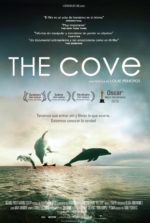 10. Tie: The Cove & Food, Inc.
10. Tie: The Cove & Food, Inc.
Two powerful activist documentaries were released in 2009, and both have the potential to change the lives of their viewers, as well as alter the world as we know it. Both contain shocking footage that’s painful to watch, but it must be seen. Both confront long-corrupt industries and needless ignorance. Both ask their audience for help, for viewers to participate in noble causes, which are not so much political as they’re in the spirit of preserving life. How can someone argue against that? Food, Inc. concerns the unsanitary and inhumane methods of killing, cleaning, and packaging food for American homes, concentrating on the corporate mindset that a cheaper product is a better product. In all probability, you won’t eat the same afterward. The doc seeks better, safer food for the country, which in turn distributes to the world market. But the mission behind The Cove is more specialized, however no less dignified. The filmmakers sought to expose the Japanese dolphin slaughter taking place in Taiji every autumn, and through a covert mission, they caught incredible, horrifying footage of dolphins being slaughtered as part of a massive cover-up by the Japanese government and whaling fleet. These effective, smartly constructed films have an incredible skill for turning complacency into activism and making a larger audience want to stand up and fight the good fight.
 9. Still Walking
9. Still Walking
Japanese filmmaker Hirokazu Kore-Eda recalls the legacy of master dramatist Yasujiro Ozu with his temperate, observant drama Still Walking. His film dissects a Japanese family, indicating how areas for potential healing are overlooked to maintain a sense of sameness—a Japanese obsession of sorts, the desire to preserve appearance has long been a cultural signifier in their cinema. The Yokoyama family joins together once a year to mourn the anniversary of the eldest son’s death. Kore-Eda’s painful film quietly surveys how the Yokoyamas pretend and ignore, keeping the family unit maintained through their lack of open conflict. In considering the Hollywood equivalent of this film, one realizes the result would be loud and unbearable—probably a dramedy about confrontations and how families make everything stressful. Kore-Eda leaves all melodrama aside for a very real depiction of family and the unspoken truths required to uphold it.
![]() 8. Avatar
8. Avatar
Having been a confirmed skeptic of James Cameron’s Avatar since seeing the initial poster and advance footage earlier in the year, I’m surprised to find the film on my own Top 10 List—especially when the more dynamic District 9 is such a close comparison. Both sci-fi actioners place humans and aliens on opposing sides, and both reveal humanity to be the more corrupt and villainous of the two. Both feature a robo-suit battle, computer-animated aliens, and impressive visuals. And while Neill Blomkamp’s film has more of a modern parallel, the spectacle of Avatar (along with its none-too-subtle pro-Green and anti-war messages) makes it the more significant film, though not necessarily better. This is a picture audience will remember seeing theatrically for years to come. It’s an event movie—a benchmark of motion-capture animation, and a key indicator of a substantial leap in the quality of computer-animation being integrated into live-action features. More than that, it’s an experience in the most fundamental sense of the word. Beyond story or the intricacy of Cameron’s elaborate sci-fi vision, this film is a nonstop ride, kinetically and visually groundbreaking. As I write this, the box-office momentum of this film hasn’t slowed, but undoubtedly, it will literally earn a place in history.
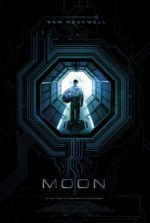 7. Moon
7. Moon
More than any other genre, 2009 was a year for science fiction. Avatar, District 9, Star Trek and Moon—they all seem to be the favorites among critics and audiences, in that every Top 10 list has at least one. Moon may have been lost in the summer blockbuster season, but this is a film that I suspect will gain attention over time and become a classic. It marked the arrival of director Duncan Jones and boasted a tour de force performance by Sam Rockwell, who deserves Oscar nominations for Best Actor and Best Supporting Actor for his multiple roles. And even though it has the same spare quality contained in The Road (which could’ve easily made it into the Top 10 of 2009), and each film has a singular performance from its respective star, Rockwell and the eerie tone of the entire picture outshine John Hillcoat’s comparable film. The understated special effects, the deceptively simple plot, the haunting backdrop—it all combines to achieve something epic, if minimalist.
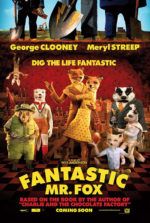 6. Fantastic Mr. Fox
6. Fantastic Mr. Fox
When he announced that he would adapt Roald Dahl’s Fantastic Mr. Fox, and that he would make it using the archaic form of stop-motion animation, Wes Anderson might have seemed overconfident. Could his unique, colorful style translate between his live-action work (Rushmore, The Darjeeling Limited) and the models needed for stop-motion? Certainly reports that Anderson directed the entire picture via video link from France, while his crew in the U.S. toiled away on the arduous three-year production, didn’t help quell doubts. But along with his co-writer Noah Baumbach (The Squid and the Whale), Anderson injected his personal signature into every snappy line of dialogue, every beautifully conceived set piece, and every touch that made this film a small masterpiece. And like Spike Jonze’s Where the Wild Things Are, another adaptation of a popular children’s text from this year, this film is incredibly artistic while being effortlessly entertaining. The choice of Anderson’s film over Jonze’s falls on its ability to reach people; whereas Where the Wild Things Are speaks to a very specific audience who can relate to a very specific kind of confused childhood, Anderson’s Fantastic Mr. Fox speaks to everyone, regardless of age or upbringing, though both are incredible works of art.
 5. Thirst
5. Thirst
Park Chan-wook’s Thirst does something profound: the film makes vampirism interesting again. While movie vamps become less and less fascinating with every Twilight or Underworld flick, Park examines the problem of being a vampire through his ingenious dramatic character description. By making his protagonist, played by South Korean star Song Kang-ho, a priest, he reinvigorates the conflicts of the vampire, making the bloodlust contrary to his character’s belief system and thus, the character becomes unique and compelling. As always, Park’s material is challenging and graphic, filled with violence, sex, and humor, but the result engages the mind as much as it does the senses. There were other great horror films in 2009—notably Sam Raimi’s incredible return to the genre with his funhouse shocker Drag Me to Hell—but none had the same emotional reverberation as Park’s, in that Thirst is less a horror movie than a drama disguised as one. His film proves that vampires haven’t dwindled into stagnant movie monsters, but that filmmakers have forgotten how to use them.
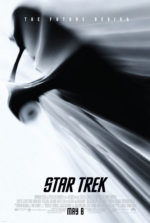 4. Star Trek
4. Star Trek
When it was announced that J.J. Abrams would relaunch the Star Trek franchise with a prequel about Kirk and Spock in Starfleet Academy, skepticism prevailed. No one, certainly not die-hard fans of the Trek-verse, expected the result to be the incredible creative success and blockbuster it was. Fans were more concerned with continuity, about not disturbing the existing timeline of the series. Abrams made a number of ballsy moves on this film and once again proved himself a growing visionary: He risked losing the entrenched Trekkie subculture; he convinced Paramount to spend more money on his film than any previous Trek picture; he assembled a cast of virtual unknowns in lead roles, and then placed them in a wonderfully conceived futureworld, glowing with the sheen of expensive visual effects and lens flares. Along with his writers Alex Kurtzman and Roberto Orci, Abrams delivered on every front, making the most enjoyable, fast-paced entry in the series, while also remaining faithful to everything that came before. Star Trek redefined a franchise with its scope and energy and opened up a niche market to an audience that wouldn’t normally find themselves cheering for the crew of the Starship Enterprise.
 3. Up
3. Up
Early in Pixar’s Up, there’s a sequence without dialogue that charts the lives of two youthful friends, both aspiring adventurers. They have innocent hopes to explore the world, and eventually their friendship blossoms over time into a marriage. We see that she cannot have children, and that without a family they save their money for their escapist dreams. Those dreams fade. The couple grows old together and soon she dies, leaving him alone with nothing to prevent him from living up to their lifelong dreams. An entire life is summed up through images; in these few minutes you’ll laugh and cry and come to truly know the character that propels the ensuing film. It’s the genius of those initial scenes, and the touching, hilarious, swashbuckling “spirit of adventure” that makes Up a superior film and one of Pixar’s most well-rounded works. Of course, Pixar faced stiff competition this year from their Japanese storytelling equivalent, Hayao Miyazaki, whose delightful film Ponyo also transported audiences into another world of fantasy. But Up tapped a greater range of emotions and proved itself, truly, a perfect film.
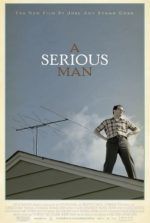 2. A Serious Man
2. A Serious Man
A Serious Man is the ultimate Coen Brothers film, in that every moment in this blackest of dark comedies furthers their long-standing theme that searching for meaning is meaningless. Whether a stubborn man’s head is being slammed against the Uncertainty Principle, or a tornado whirls toward town with ominous dread, the symbolism used by the filmmakers is at once hilarious, tragic, and insightful. That being said, the film is an allegory for the pointlessness of allegory, it makes you ponder the value of pondering and hopes that you won’t destroy yourself in the process. The Coens’ characters have a long history of dwelling on the unknowable or simply throwing their arms in the air and giving up trying to figure it out. The film’s protagonist, Larry Gopnik (Michael Stuhlbarg), a tense Jewish man in Minnesota seeking answers to why his life has taken a wrong turn, should probably just relax and listen to some Jefferson Airplane—that would be his rabbi’s advice, if the holy man had time to waste on Gopnik. “Receive with simplicity everything that happens to you” is the Elie Wiesel quote that appears at the beginning of the film, and that’s the enduring theme that, along with a parallel from the Book of Job, this film exemplifies. But as contradictory as it may be to the film’s subject matter, the Coens demand your strict attention and will have you deliberating on their elusive allegory for days, weeks, even months afterward.
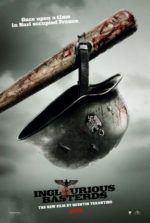 1. Inglourious Basterds
1. Inglourious Basterds
In the last scene of Quentin Tarantino’s Inglourious Basterds, Brad Pitt’s character Lt. Aldo Raine looks into the camera—a POV shot from the Nazi colonel whose forehead he’s just etched a swastika into—and says with a grin, “I think this might just be my masterpiece.” Tarantino seems to be reflecting on his own genius here, and he’s completely correct in doing so. More than Pulp Fiction or the entire Kill Bill saga, the style, formal presentation, narrative, and resonant themes rooted in film theory, all align to fashion a jewel of postmodern filmmaking. With this, the most precise demonstration in his career, Tarantino has made a movie about movies. It’s about the diversion of the cinema, about the escape, about the ways it can make us feel, as well as the historical significance of filmmaking. If you’re looking for this meaning, search no further than the last half of the film, which spends the majority of its time in a French moviehouse, reciting details about projectors and the flammability of film stock, leading up to a finale that services audiences with the ultimate money shot.
Tarantino has made 2009’s most intelligent films from a cinephile’s perspective, but also one of the most entertaining. Aside from characteristic includes like the Samuel L. Jackson voiceover and David Bowie being on the soundtrack, Tarantino’s picture features a hilarious performance from Pitt, the actor’s half-smile intact throughout; his delivery is part badass, part comic gold, and it’s one of Pitt’s best. Then there’s Christopher Waltz as Colonel Hans “The Jew Hunter” Landa, who gives arguably the best performance of the year, guiding the film’s most suspenseful moments with his unrelenting questions and hysterically off-key understanding of American sayings. And what gripping scenes Tarantino has written! His brilliant dialogue winds conversations into clever sparring matches between Allied forces and prying Nazis, ever thrilling and nerve-racking, ending them in sudden bursts of (not so) gratuitous violence. As a film about film that matures with every viewing, it’s Tarantino’s masterpiece.





